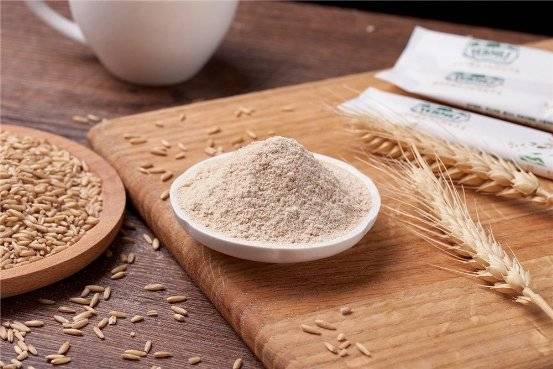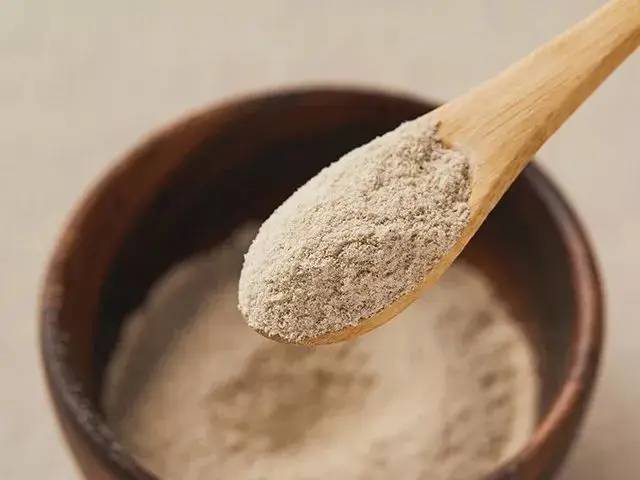What Is Oat Beta Glucan?
Oats are an ancient cultivated crop that originated in China and is also the main food crop for the people in the high-altitude areas of northern China, such as Inner Mongolia, Hebei, Gansu, and Shanxi [1]. Oats are high in nutritional value, with 4.71% unsaturated fatty acids, 16.89% protein, and 10.60% dietary fiber. Oat β-glucan is the main functional ingredient of dietary fiber, which is made through enzymatic hydrolysis, extraction, precipitation, alcohol precipitation, drying, sterilization and other processes. In 2014, China included oat β-glucan in the list of new food ingredients [2].
According to the latest research report from Hengzhou YH (Figure 1), the global oat β-glucan market is expected to grow at a compound annual growth rate of 7.22% between 2021 and 2027, with a market value of 80 million US dollars by the end of 2027. The compound annual growth rate of the Chinese market is expected to be 8.1% between 2021 and 2027, the market value will reach 22 million U.S. dollars, which indicates that the application of oat β-glucan will become more and more extensive in the future, and the food industry will become the main application field of oat β-glucan, providing impetus for the development of the food industry [3]. This paper comprehensively discusses the role and function of oat β-glucan and its application in food processing and production, aiming to provide theoretical support for the further development and application of oat β-glucan.
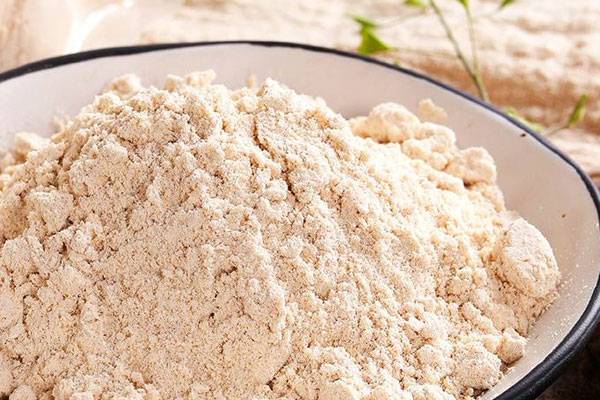
1. The efficacy of oat β-glucan
1.1. Lowering blood lipids and preventing cardiovascular disease
Recently, an article published in the Journal of the American Medical Association: Open Network by Shivakoti Rupak [4] et al. proposed that the daily consumption of 5 g of cereal fiber (oat β-glucan) by people over 65 years of age can effectively reduce the risk of cardiovascular disease. Oat β-glucan is a dietary fiber derived from oats. The US Food and Drug Administration (FDA) and the European Food Safety Authority (EFSA) have reported that a daily intake of at least 3 g of oat β-glucan can lower blood cholesterol levels and thus reduce the risk of coronary heart disease. The international guidelines for the management of dyslipidemia recommend a daily intake of 5–15 g (European guidelines) or 10–25 g (US guidelines) of β -glucan can reduce blood cholesterol levels. Pei Suping [5] found that after rats were given an oat β-glucan enema, their blood total cholesterol levels were significantly reduced, confirming that oat β-glucan has a hypolipidemic effect.
1.2 Lower blood sugar and control weight
Oat β-glucan is derived from oats, is rich in dietary fibre, and is a low GI food ingredient. It can not only increase postprandial satiety [6], but also reduce abdominal fat, thereby reducing body weight, body mass index, body fat and waist-to-hip ratio. This is mainly because oat β-glucan can form mucus on the inner wall of the digestive tract, preventing the contents of the small intestine from contacting digestive enzymes, thereby prolonging the digestion and absorption time [7].
Tappy [8] and others conducted experiments on diabetic patients who consumed 5 g of oat β-glucan per day, and the results showed that the patients' blood glucose levels could be reduced by about 50%. Wang Haibo et al. [9] also confirmed in their study of blood sugar and sugar metabolism in diabetic rats that oat β-glucan can improve the transport speed and efficiency of sugars during digestion, absorption and utilization in the body, while also significantly reducing the breakdown of liver glycogen, thereby reducing blood sugar. ABBASI et al. [10] believe that oat β-glucan can manage blood sugar by delaying the intestinal absorption of carbohydrates and maintaining stable insulin secretion in the body insulin secretion to manage blood sugar.
1.3 Improves stomach immunity
Gudej Sylwia et al. [11] published a randomized clinical study in Nutrients in 2021 that demonstrated the beneficial effects of oat beta-glucan in chronic gastritis. The study showed that a daily intake of 3 g of oat beta-glucan for 30 days in the diet can reduce mucosal damage without aggravating the symptoms of clinical gastric disease. The possible mechanism of action is that oat beta-glucan can form viscoelastic substances to protect the stomach after absorbing water.
1.4 Promotes intestinal health
LAZARIDOU et al. [12] found that oat β-glucan, as a water-soluble dietary fiber, can promote the growth of probiotics, help regulate the intestinal flora, and promote intestinal digestion in the human body. Li Zhenghua [13] experimental research shows that oat β-glucan can be metabolized by anaerobic bacteria to produce short-chain fatty acids (SCFA) and butyric acid, which enhance the acidic environment in the intestine to achieve a bactericidal and bacteriostatic effect. MA et al. [14] also believe that oat β-glucan has a strong water-absorbing effect and viscosity, which can promote the intestinal movement of chyme and reduce the adverse effects of many pathogenic substances on the intestine, thereby reducing constipation and the risk of colon cancer.
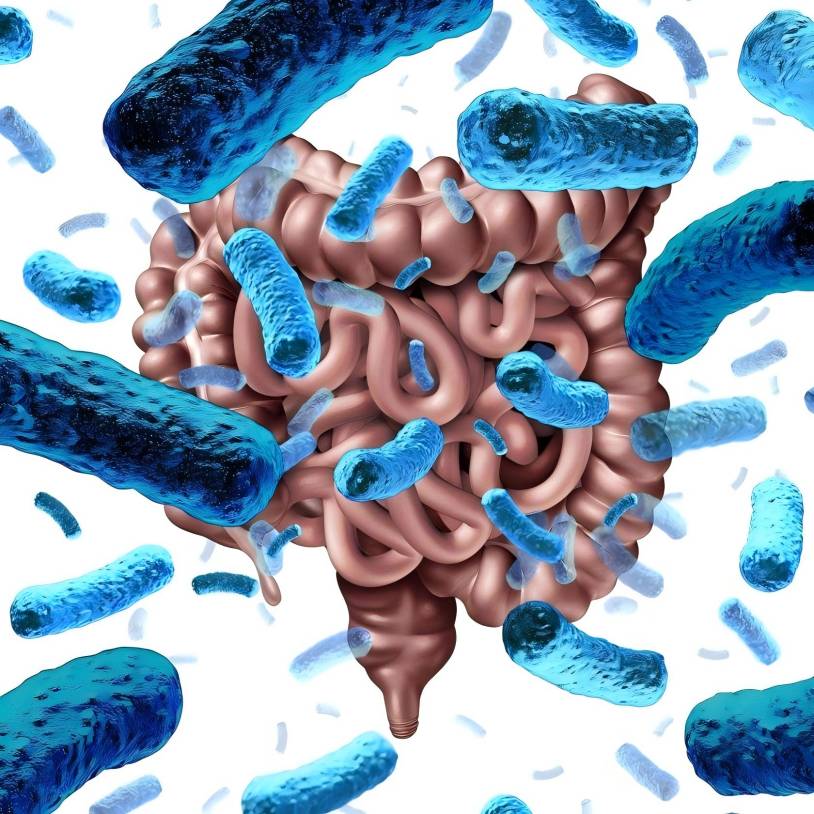
1.5 Improves immunity and fights cancer
Oat β-glucan can act as an immunomodulatory ligand for some immune cells to enhance the immune system of the consumer [15]. Studies by Estrada [16] and Yun et al. [17] have shown that oat β-glucan has immunomodulatory effects. Oat β-glucan can not only promote lymphocyte proliferation in mice and significantly enhance their resistance to bacterial and viral invasion, but also stimulate the secretion of tumor necrosis factor and interleukin-1 by peritoneal macrophages, and increases the amount of immunoglobulin in mouse serum. Ning Hongzhen [18] and Christof [19] and other studies have proved through in vitro experiments that oat β-glucan can stimulate immune function by activating macrophages to increase the amount of immunoglobulins and natural killer cells, thereby improving the body's resistance to infections and parasitic diseases. Murphy [20] conducted in vivo experiments on rats and CHOROMANSKA [21] conducted in vitro experiments, both of which proved that oat β- glucan can inhibit the metastasis and proliferation of tumor cells, and has good anti-tumor function, while having no side effects on normal cells.
2 Application of oat β-glucan in food processing
2.1 Application in functional foods
Oat β-glucan has the effects of lowering blood sugar, lowering blood lipids, regulating gastrointestinal health and improving immunity. Functional foods can be developed by adding oat β-glucan. Japan has developed an EX health food product that is rich in oat β-glucan and has a soluble dietary fiber content of more than 5%. It is low in fat, but has a good taste and flavor, and has the effect of lowering the body's cholesterol level and reducing the risk of chronic diseases [22].
Taiwan's latest research and development of oat bran powder containing 3.1 g/serving of oat beta-glucan and oat beta-glucan oat milk products containing up to 3.8% oat beta-glucan, combined with pea fiber and isomalto-oligosaccharides in product development, making the products rich in plant protein, vitamins, minerals, etc., providing comprehensive nutrition for intestinal health and having the advantages of high fiber, low GI and other advantages of a ketogenic diet, to help maintain intestinal health. ABBASI et al. [10] showed through experiments that oat β-glucan can regulate the activity of glucose transport to protein in the intestine to reduce people's postprandial blood glucose levels; therefore, oat β-glucan can be used as a dietary supplement to reduce postprandial blood glucose and be used in functional foods that can reduce blood glucose levels in diabetic patients.
2.2 Application in dairy products and beverages
Oat β-glucan powder has good emulsifying, thickening and viscous properties, and is stable under acidic conditions. It can not only improve the sensory properties of products, but also be used as a substrate for the fermentation of probiotics, including lactobacilli and bifidobacteria. Therefore, it can be used in dairy products and beverages such as yogurt and ice cream.
Liang Ying et al. [23] added oat β-glucan to yogurt for testing and found that the yogurt with added oat β-glucan had a smooth texture, a delicate mouthfeel and a rich milky aroma, with good sensory properties. Dong Jilin et al. [24] added different proportions of oat β-glucan to ice cream mixed with guar gum and CMC as a complex stabilizer, and found that adding 0.20% oat β-glucan not only significantly increased the expansion rate and viscosity of the ice cream, but also increased its resistance to melting. Jia Jianbo [25] used oat β-glucan as a fermentation substrate for probiotics such as Bifidobacterium and Lactobacillus rhamnosus, and successfully developed an oat-based biological milk with oats and skimmed milk powder as the main ingredients, which is rich in active ingredients and has the effect of lowering blood sugar and weight loss. The oat β-glucan content in the product is as high as 180 mg/L, and the number of live bacteria is about 1 011 per mL.
At the same time, oat β-glucan can be used as a soluble dietary fiber ingredient with cholesterol-lowering, blood glucose-lowering, and laxative effects. It can be used with 0 sugar low-calorie sweeteners, dietary fiber, etc. to develop sugar-free foods such as yogurt, soy milk, and milk powder for the elderly.
2.3 Application in baked goods
Adding oat β-glucan during the processing of baked goods not only enriches the nutritional composition of the product, but also improves the dough's kneadability and water retention, while also extending the product's shelf life. Zhai Aihua et al. [26] found that when the amount of oat flour added was 15%, and the amounts of emulsifier and oxidant added were 1.0% and 0.3% respectively, the dietary fiber content of the processed oat nutrition bread was 9.64 times that of ordinary bread, greatly improving the nutritional content of the bread. Du Yajun et al. [27] added oat dietary fiber to cakes to solve the problem of the lack of dietary fiber in cakes. It was found that when the amount of oat dietary fiber added was 6%, the color, aroma, and taste of the cake were further improved. At the same time, because oat β-glucan has a certain water-holding capacity, it has a certain water-retaining effect on the cake during storage, extending the shelf life. At this time, the baked the cake is at its most ideal in terms of sensory evaluation and other physical and chemical indicators.
2.4 Application in meat products
Oat β-glucan has good water retention and oil retention properties, and can be added to meat products to improve sensory flavor. Dong Jilin et al. [28] used lean and fatty pork, oat β-glucan, starch and carrageenan to make minced meat. They found that the water retention and oil retention of the minced meat with added oat β-glucan were higher than those of the control group without added oat β-glucan. The sensory properties of the minced meat were also greatly improved, with excellent flavor, tenderness, juiciness and elasticity.
LIU et al. [29] found in a comparative experiment that meatballs with added oat β-glucan had a smoother surface than blank meatballs, and that meatballs with added oat β-glucan showed the highest overall acceptability in both texture analysis and sensory evaluation.

2.5 Application in tablet candy
Pressed candy made with oat β-glucan powder, fruit powder, and sorbitol (clearing lozenges, effervescent/micro-effervescent lozenges, tongue scraping clearing tablets, etc.). The presence of oat β-glucan not only increases the viscosity of the gastric contents, delaying gastric emptying and thereby preventing a sharp rise in blood sugar after a meal, but also has a very good laxative effect and lowers harmful low-density cholesterol. Oat β-glucan as the main raw material, maltitol, sorbitol and oligo-isomaltose as auxiliary materials, after being processed through the processes of blending, mixing, granulating, drying and tablet pressing, can be made into low-calorie oat dietary fiber chewable tablets [30] with health-promoting functions such as regulating blood lipids and blood sugar, improving the intestinal environment and softening the bowels.
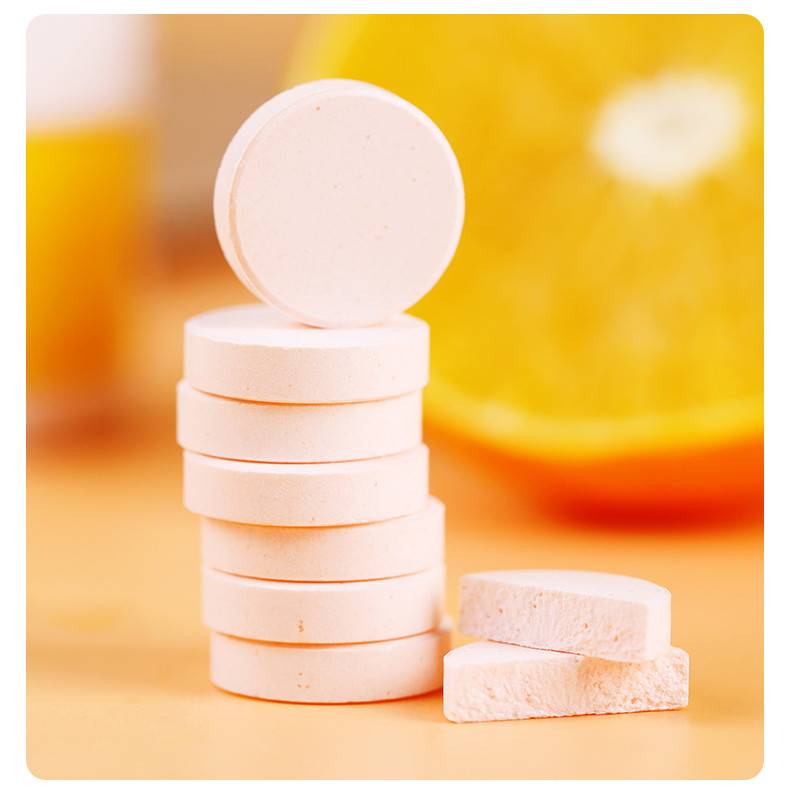
2.6 Application in solid drinks
Oat β-glucan-containing solid drinks are rich in dietary fiber and low-calorie foods that are not easily digested after consumption. The oat β-glucan in the product is highly absorbent and bulking, and can produce a lasting feeling of fullness and satisfaction in the stomach after consumption, reducing appetite [31]. It can also promote the secretion of a gastrointestinal hormone called peptide (PYY2-36) which can bind to the hypothalamic Y2 receptor, which can reduce appetite by inhibiting the release of the appetite-stimulating factor neuropeptide (YY) [32]. Weight loss can be achieved while controlling blood sugar and blood lipids, reducing constipation, etc.
2.7 Application in oral liquids
An oral solution made with oat β-glucan, resistant dextrin, and fructooligosaccharides can take advantage of the water-absorbing and swelling properties of oat β-glucan and its film-forming properties to distribute more evenly in the intestines, thereby improving its lipid-lowering and blood glucose-lowering effects. It can also significantly improve the taste and acceptance of the product. It has the effect of lowering blood lipids and serum cholesterol and raising high-density lipoprotein. It can control diabetes caused by insulin and is of great significance for the prevention and treatment of atherosclerosis and cardiovascular and cerebrovascular diseases. atherosclerosis and cardiovascular diseases is of great significance.
3 Outlook
Oat β-glucan is a new natural functional food ingredient that has a variety of health benefits. It can be widely used in the processing of functional foods, dairy products and beverages, cereal meal replacements and other foods. It not only increases the dietary fiber content of the product, but also helps to improve the texture and structure of the product. It also reduces the fat and sugar content of the food, thereby achieving innovative claims of low sugar/no sugar/reduced sugar and meeting clean label requirements. The advantages and application value of oat beta-glucan are highlighted, and it is believed that the application of oat beta-glucan will become more and more common.
References
[1] Xue Feng, Ou Shiyi. Health-promoting function of oat bran [J]. Food Industry, 2005(3): 3-5.
[2] Department of Food Safety Standards and Testing and Assessment. Announcement on the approval of tomato seed oil, loquat leaves, arabinogalactan, Hubei begonia (Camellia japonica) leaves, bamboo leaf flavonoids, oat β-glucan, Lactobacillus sake, and Propionibacterium acidipropionici as new resource foods (No. 20 of 2014) [Z]. 2014-12-19.
[3] Wang Fengmei, Qi Yanling. Application of oat β-glucan in food production [J]. Beijing Agriculture, 2015 (14): 16.
[4]Shivakoti Rupak, Biggs Mary L, Djoussé Luc, et al. Intake and Sources of Dietary Fiber, Inflammation, and Cardiovascular Disease in Older US Adults[J].JAMA Network Open,2022(5)3: e225012-e225022.
[5] Pei Suping. A reductionist approach to observe the effect of oat beta-glucan in treating hyperlipidemia in rats and a preliminary study of nutritional research based on the theory of complex adaptive systems [D]. Shanghai: Second Military Medical University, 2006.
[6]PENTIKAINEN S, KARHUNEN L, FLANDER L, et al. Enrichment of biscuits and juice with oat β- glucan enhances postprandial satiety[J]. Appetite, 2014, 75: 150-156.
[7]CHANG H C, HUANG C N, YEH D M, et al. Oat prevents obesity and abdominal fat distribution, and improves liver function in humans[J]. Plant Foods for Human Nutrition, 2013, 68(1):18-23.
[8]TappyL,GügolzE,WürschP.Effectsofbreakfastcere alscontainingvariousamountsofbeta-glucanfiberson plasma glucoseandinsulin responsesin NIDDM subjects[J].Diabetes Care,1996, 19(8):831-834.
[9] Wang Haibo, Liu Dachuan. Study on the effect of oat beta-glucan on blood glucose and glucose metabolism in diabetic rats [J]. Food Science, 2005, 26 (8): 387-391.
[10]ABBASI N N, PURSLOW P P, TOSH S M, et al. Oat β-glucan depresses SGLT1- and GLUT2-mediated glucose transport in intestinal epithelial cells (IEC-6)[J]. Nutrition Research, 2016, 36(6): 541-552.
[11]Gudej Sylwia, Filip Rafa,Harasym Joanna, et al.Clinical Outcomes after Oat Beta-Glucans Dietary Treatment in Gastritis Patients[J]. NutrientsVolume, 2021(13)8:2791-2791.
[12]LAZARIDOU A, SERAFEIMIDOU A, BILIADERIS C G, et al. Structure development and acidification kinetics in fermented milk containing oat β-glucan, a yogurt culture and a probiotic strain[J]. Food Hydrocolloids, 2014, 39(4):204-214.
[13] Li Zhenghua. The health benefits of oats for intestinal health [J]. Anhui Agricultural Science, 2015, 43(21): 21-22.
[14]MA, LKKI Y, VIRTANEN E. Gastrointestinal effects of oat bran and oat gum: A review[J]. LWT-Food Science and Technology, 2001,34(6):337-347.
[15] Zhou Jiaxin, Jia Lina, Liu Fengyi, et al. Application of oat β-glucan in food [J]. Cereals, Oils and Fats, 2020, 33(2): 26-27.
[16]ESTRADA A,YUN C H,VAN KESSEL A, et al.Immunomodulatory activities of Oat beta-glucan in vitro and in vivo [J].Microbiol Immunol,1997,41 (12): 991-998.
[17]YUN C H,ESTRADA A,VAN KESSEL A, et al.Beta-glucan,extracted from oat,enhances disease resistance against bacterial and parasitic infections [J]. FEMS Immunol Med Microbiol, 2003,35(1): 67-75.
[18] Ning Hongzhen, Qi Xiao, Jia Chunmei, et al. Research on the antioxidant and hypolipidemic effects of oat beta-glucan [J]. Food Science and Technology, 2008, 9: 153-155.
[19]Christof R, Nancy A, Joanne S. Development of a monoclonal antibody-based enzyme-linked immunosorbent assay to quantify soluble β-glucans in oats and barley[J]. Journal of Agriculturaland Chemistry,2003,51 :5882- 5887.
[20]Murphy E A, Davis J M, Brown A S, et al.Effects of moderate exercise and oat beta-glucan on lung tumor metastases and macrophage antitumor cytotoxicity[J].Journal of Applied Physiology, 2004,97(3):955.
[21]CHO ROMAN SKA A, KUL BACK A J , REMBIALKOWSKA N, et al. Anticancer properties of low molecular weight oat beta-glucan an in vitro study[J].International Journal of Biological Macromolecules, 2015,80:23-28.
[22] You Zuchi. Japan develops new oat EX food [J]. Chinese and Foreign Food Processing Technology, 2003 (7): 7-8.
[23] Liang Ying, Cui Bingqun, Zhang Sujuan. Application of oat β-glucan in fermented yogurt [J]. China Food Additives, 2011 (1): 178-181.
[24] Dong Jilin, Zheng Jianqiang, Shen Ruiling. Viscosity of oat β-glucan and its application in ice cream [J]. Food Research and Development, 2007 (7): 193-196.
[25] Jia Jianbo. Development of oat bio-milk [J]. Food Science, 2003 (2): 79-82.
[26] Zhai Aihua, An Yu, Jiang Qian. Development of nutritious oat bread [J]. Journal of Heilongjiang Bayi University of Agriculture and Forestry, 2006 (6): 67-70.
[27] Du Yajun, Jia Yu. Application of oat dietary fiber in cakes [J]. Cereals, Oils and Foodstuffs Science and Technology, 2004 (6): 7-8.
[28] Dong Jilin, Shen Ruiling. Preliminary application research of oat gum in minced meat [J]. Meat Research, 2007 (5): 17-19.
[29]LIU R, WANG N, LI Q, et al. Comparative studies on physicochemical properties of raw and hydrolyzed oat β-glucan and their application in low-fat meatballs[J]. Food Hydrocolloids, 2015, 51 :424-431.
[30] Du Yajun. Process research on oat dietary fiber chewable tablets [J]. Cereals, Oils and Foodstuffs, 2006, 14(5): 37-38.
[31]Hetherington M M, Cunningham K, Dye L, et al. Potential benefits of satiety to the consumer: Scientific considerations [J]. Nutrition Research Reviews, 2013, 26 (1):22-38.
[32]Beck E J, Tapsell L C, Batterham M J, et al. Increases in peptide Y-Y levels following oat β-glucan ingestion are dose-dependent in overweight adults [J]. Nutrition Research,2009,29(10):705-709.


 English
English French
French Spanish
Spanish Russian
Russian Korean
Korean Japanese
Japanese

